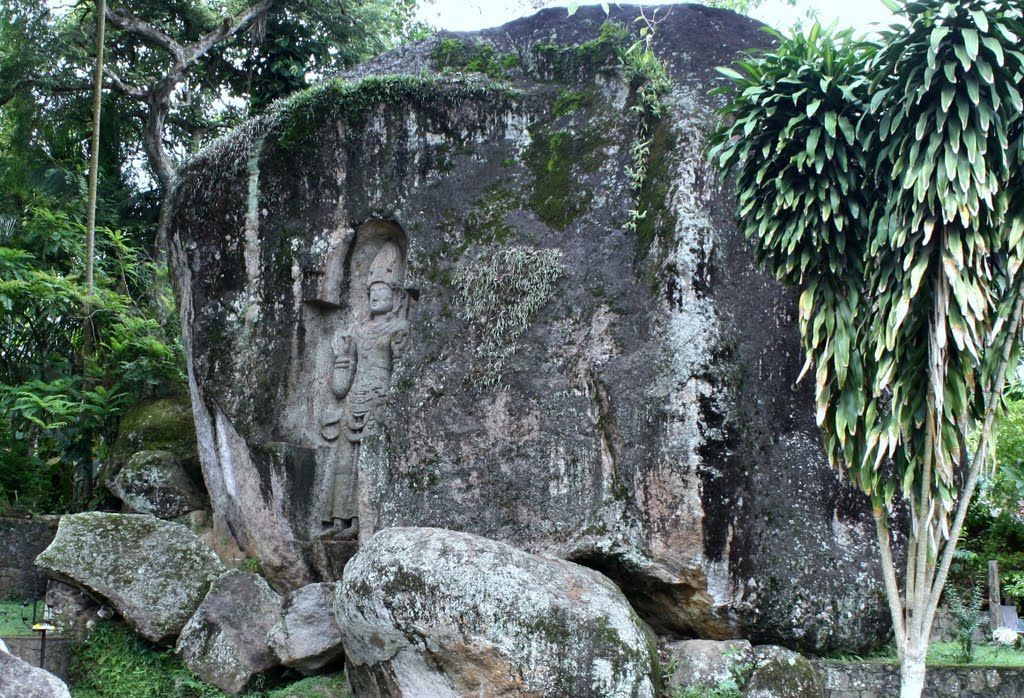About
In Weligama, a beach town on the southern coast of Sri Lanka, there is a 10-foot-tall statue carved into the face of a boulder. Though the exact origin of this sculpture is not known, there are many theories and local stories about where it came from.
Some local legends tell a story of a foreign king, while other stories say it was a prince, who suffered from a severe skin disease (kushta in Singhalese). He came to hide in Weligama Bay and was then cured by a local doctor. As a sign of his gratitude, the royal carved a statue of himself and left. (It is argued that if the story is true the king should have carved a statue of the doctor.)
Another version of the story talks about how this sick king or prince made an offering to the god Natha, who appears in many forms. Once he was cured, he made a statue of Natha as a gift. These stories were told in ancient times when Weligama was used as a harbor by foreign trading ships, meaning the rock could have been there before they arrived.
Archaeologists and historians believe that the statue depicts a Bodhisattva, a person who is destined to reach nirvana. This is due to the presence of four meditating Buddha figures on the headdress and a lotus in the hand. Most maintain that it is the Bodhisattva Avalokiteshvara, from Mahayana Buddhism, thought to be the most powerful healers of mankind. This theory is based on two ideas: First, because of the local stories about the king/prince being healed; and second because of similar carvings found in the Wellawaya area called Buduruwagala Raja Maha Viharaya, which is located to the northeast. Details of the statue have led archaeologists to believe that it dates back to the seventh or eighth century.
Regardless of any belief, this statue is the only remaining preserved statue in this area and locals still come to worship this statue to request relief from diseases.
Related Tags
Know Before You Go
Open always. No lock on the rotating turnstile gate. There are no lights at night time.
Community Contributors
Added By
Published
June 30, 2022

























